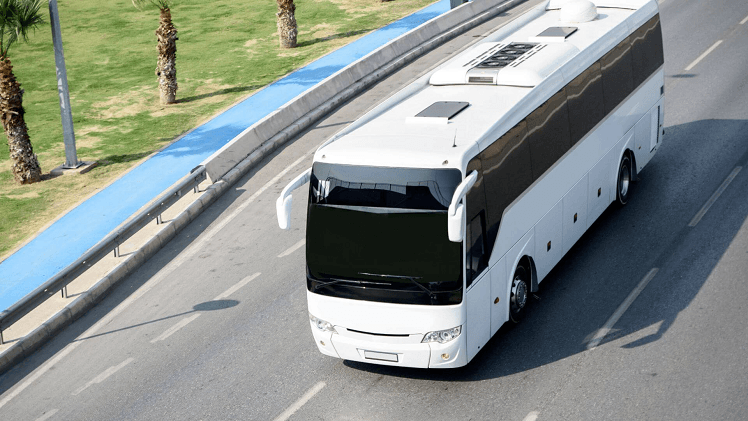In the realm of passenger transport solutions, particularly across the diverse and expansive landscapes of Europe, safety standards are not merely a regulatory checkbox; they are the bedrock of reliable and trustworthy service. Reputable providers, including those operating through platforms like bus-eu.com, understand this critical imperative, adhering to and often exceeding the stringent regulations set forth by European authorities. This unwavering commitment to safety permeates every facet of their operations, from the meticulous maintenance of their fleet to the rigorous training of their drivers and the integration of cutting-edge safety technologies.
Adherence to Regulatory Compliance and Vehicle Integrity
The foundation of robust safety standards in European bus travel is rooted in strict regulatory compliance. All vehicles within a reputable fleet must meet specific European emission and safety norms, such as Euro 5 and Euro 6, which are designed to not only reduce environmental impact but also often incorporate advancements in vehicle structural integrity and active safety systems. Beyond initial certification, a continuous and comprehensive program of preventive maintenance is non-negotiable. Buses undergo regular, thorough inspections to ensure that every critical component – from braking systems and tires to emergency exits and seatbelts – is in impeccable working order. This proactive approach to vehicle integrity significantly minimizes the risk of mechanical failure on the road, providing passengers with the utmost confidence and peace of mind.
Furthermore, the structural design of modern coaches is constantly evolving to enhance crash protection. Significant research and development are invested in areas such as reinforced frontal structures, energy-absorbing frontal areas designed to dissipate impact forces, and the integrity of the driver’s cabin. The primary goal is to engineer vehicles that can withstand severe impacts and protect occupants effectively. Innovations like the use of laminated glass in windows and the development of side airbags specifically for rollover scenarios are examples of advancements aimed at preventing passenger ejection and significantly reducing injury severity during unforeseen events. These features are not simply optional extras; they are integral to the inherent safety of the vehicle’s design.
The Indispensable Role of Expert Drivers and Fatigue Management
While advanced vehicle technology is undeniably crucial, the competence, professionalism, and alertness of the driver remain paramount. Bus-eu.com and its associated partners prioritize the selection and ongoing training of highly experienced and professional drivers. These individuals are not only skilled in navigating Europe’s varied road conditions but are also intimately familiar with local regulations, efficient routes, and emergency protocols. Beyond driving expertise, rigorous adherence to strict driving and rest time regulations is meticulously enforced. European Commission directives mandate the use of digital tachographs to accurately record and monitor a driver’s activity, effectively combating fatigue and ensuring they are adequately rested before taking the wheel. This diligent management of driver hours is a critical component in preventing accidents caused by exhaustion.
Moreover, modern coaches are increasingly equipped with intelligent driver assistance systems designed to augment the driver’s vigilance and reaction time. Systems such as Advanced Driver Distraction Warning (ADDW) and Driver Drowsiness and Attention Warning (DDR-AW) actively monitor driver behavior and alertness, providing timely alerts if signs of distraction or fatigue are detected. These intelligent systems act as an additional layer of protection, complementing the driver’s professionalism and significantly enhancing overall road safety for all passenger transport solutions.
Cutting-Edge Safety Technologies for Comprehensive Protection
The modern fleet incorporates a comprehensive suite of sophisticated safety technologies that extend far beyond basic requirements. These include:
- Blind Spot Information Systems (BLIS): Utilizing advanced sensors, BLIS alerts the driver to vehicles or cyclists in their blind spots, which is particularly crucial during lane changes or in dense urban traffic.
- Emergency Brake Assistance Systems: These proactive systems can detect potential frontal collisions and automatically apply braking force if the driver does not react in time, significantly reducing stopping distances and the severity of impact.
- Pedestrian and Cyclist Collision Warning (PCW): Especially vital in urban environments, PCW systems detect vulnerable road users near the vehicle and warn the driver, helping to prevent accidents during turns or when navigating busy areas.
- Tire Pressure Monitoring Systems (TPMS): Maintaining correct tire pressure is essential for safe vehicle operation, optimal handling, and fuel efficiency. TPMS alerts the driver to any pressure deviations, preventing blowouts and ensuring stable performance.
- Reversing Detection Systems (REV): These systems provide drivers with crucial information about objects or people behind the vehicle, preventing collisions when reversing or exiting parking spaces.
These cutting-edge technologies, combined with continuous advancements in crash protection and restraint systems, illustrate the industry’s unwavering commitment to passenger safety. For groups relying on passenger transport solutions for their European adventures, knowing that bus-eu.com adheres to and integrates these rigorous safety standards provides invaluable reassurance, making for a worry-free journey. The emphasis on safety is not just a regulatory obligation; it is a fundamental aspect of their commitment to providing a reliable, secure, and ultimately superior customer experience. To explore the safety commitments of their services, you can click here.

